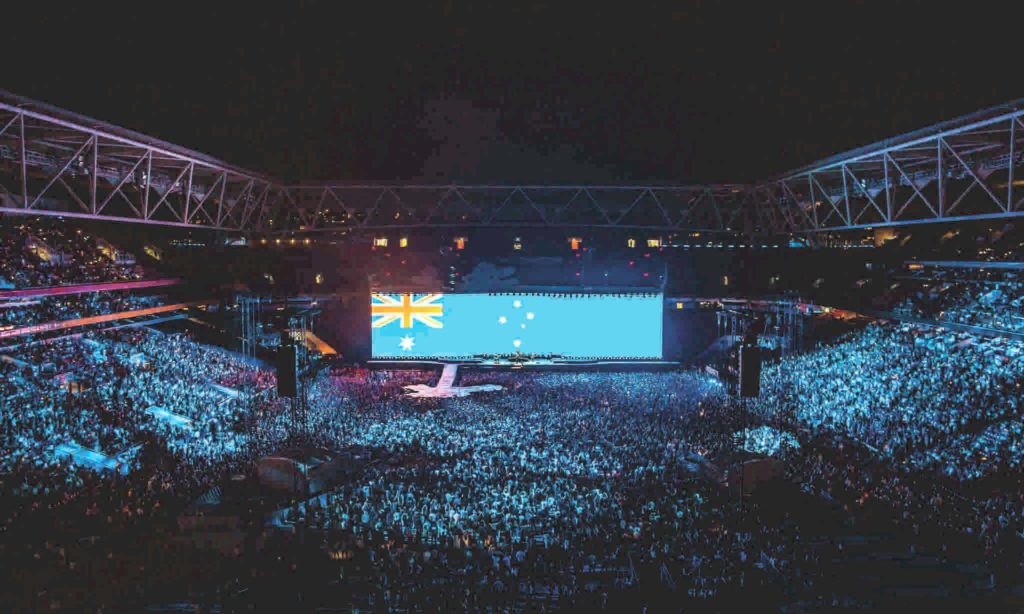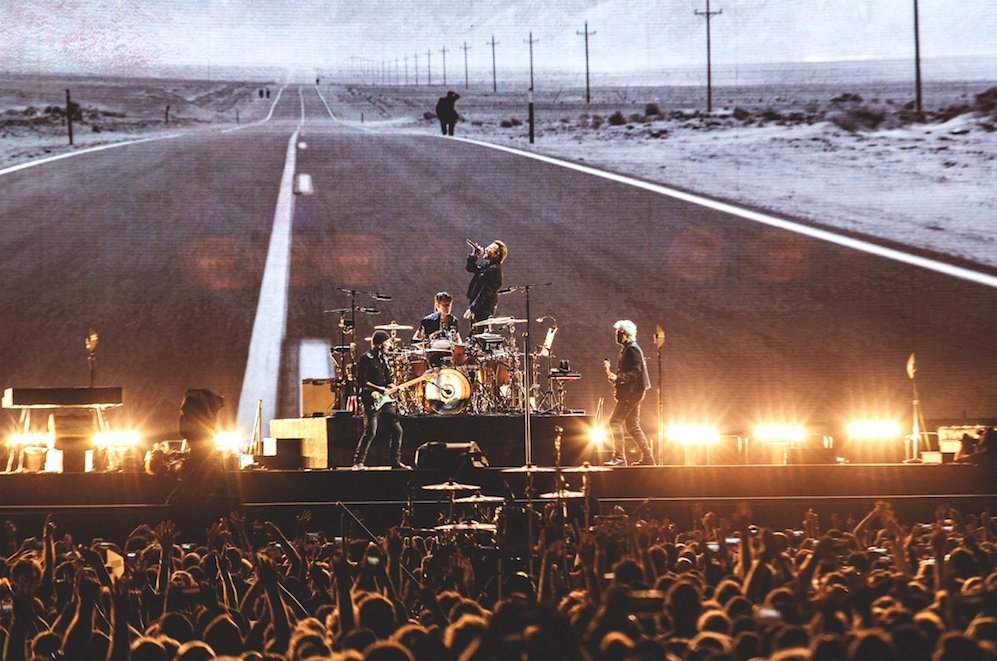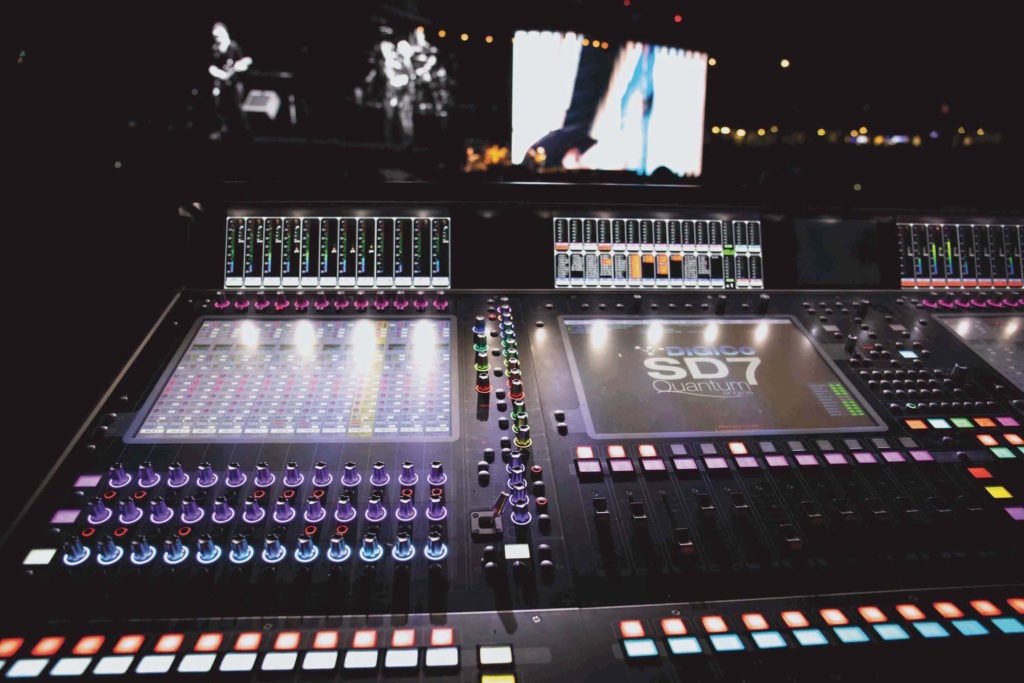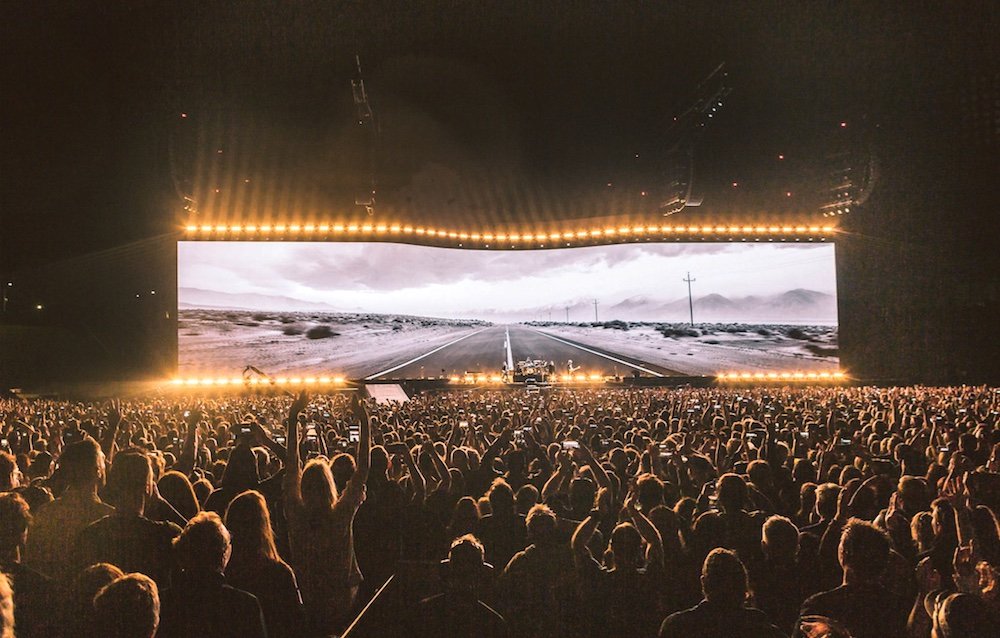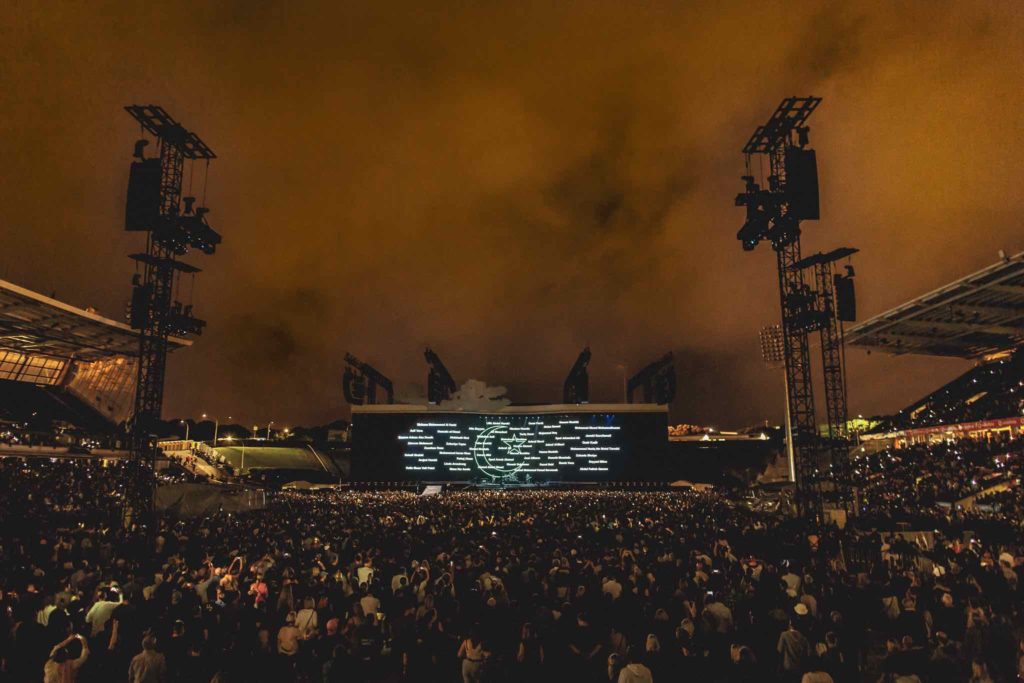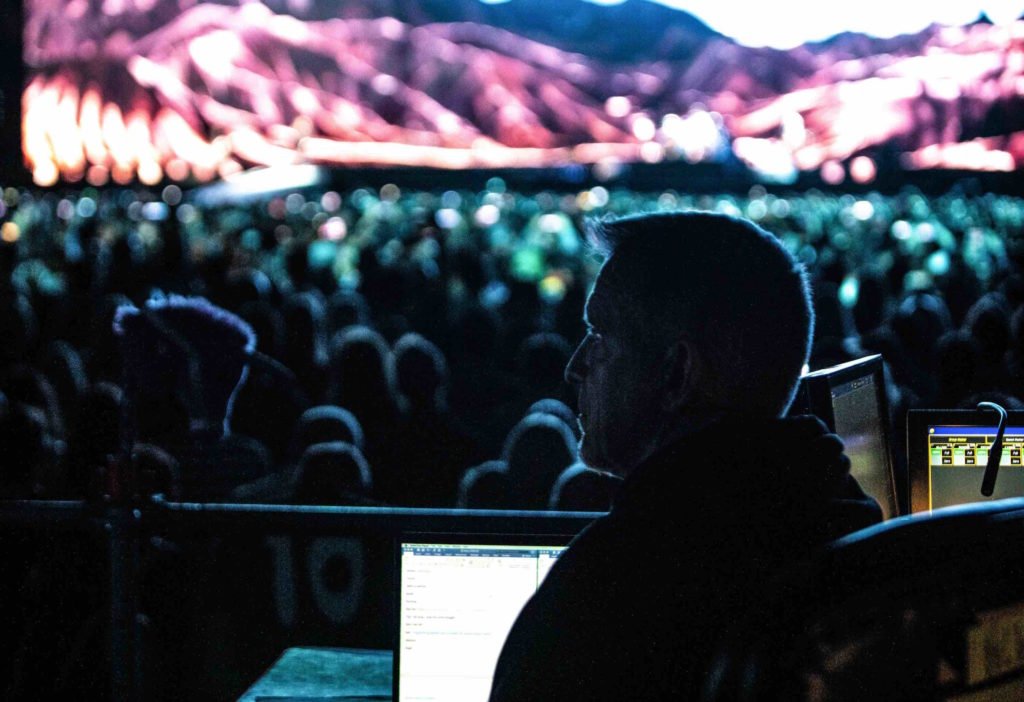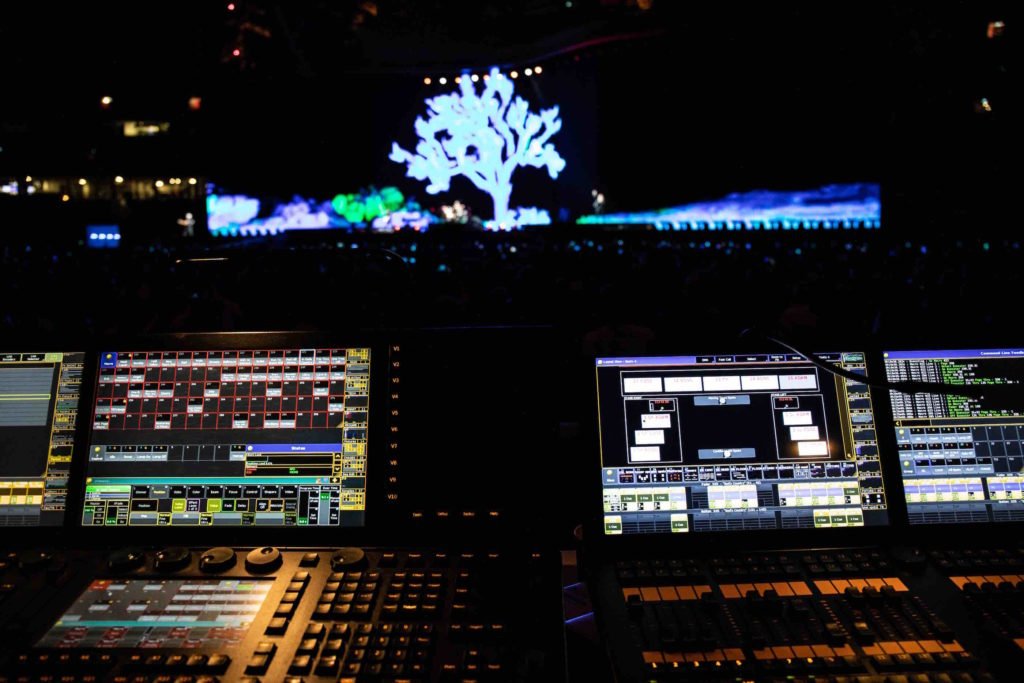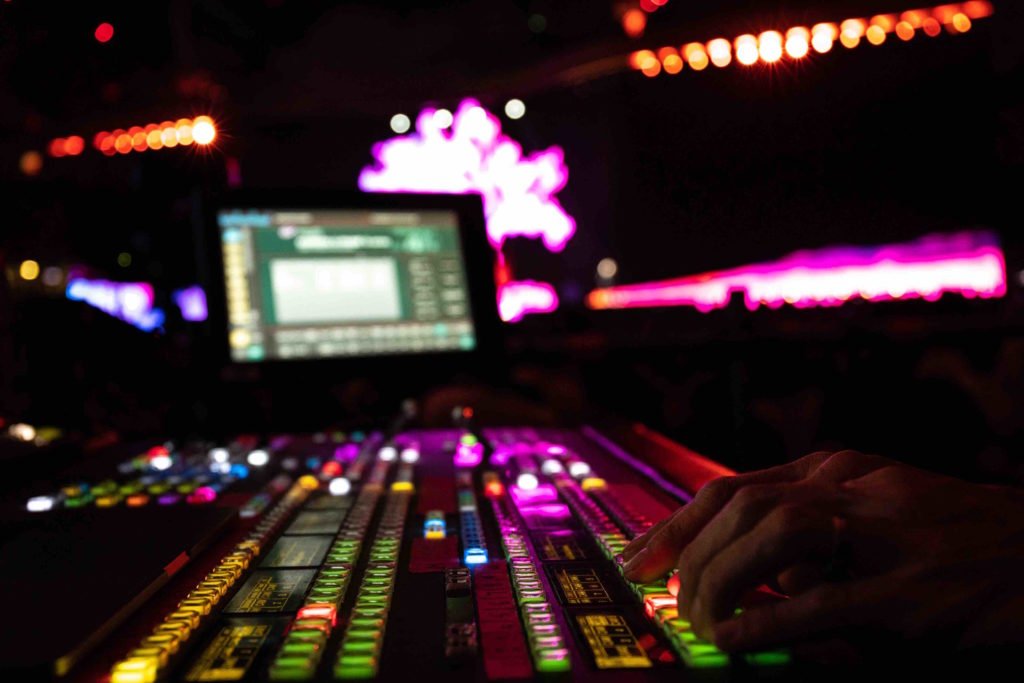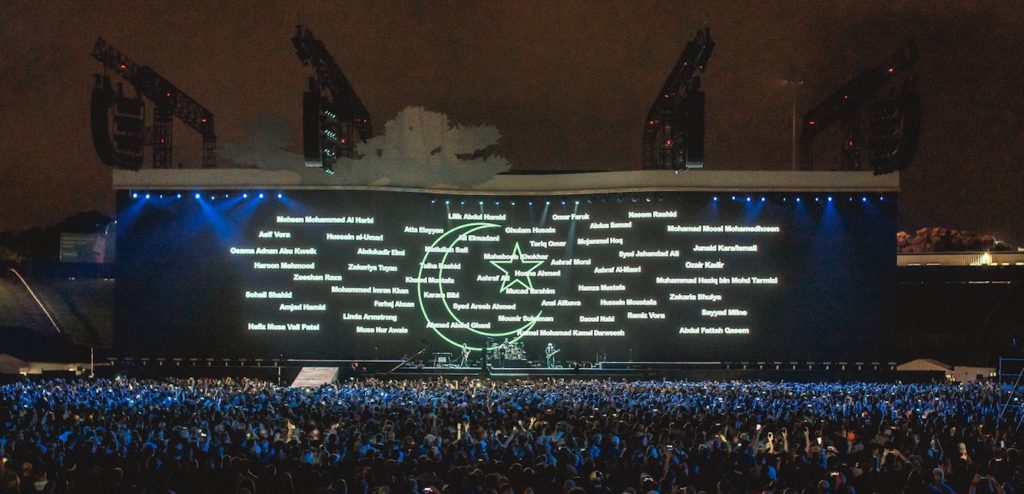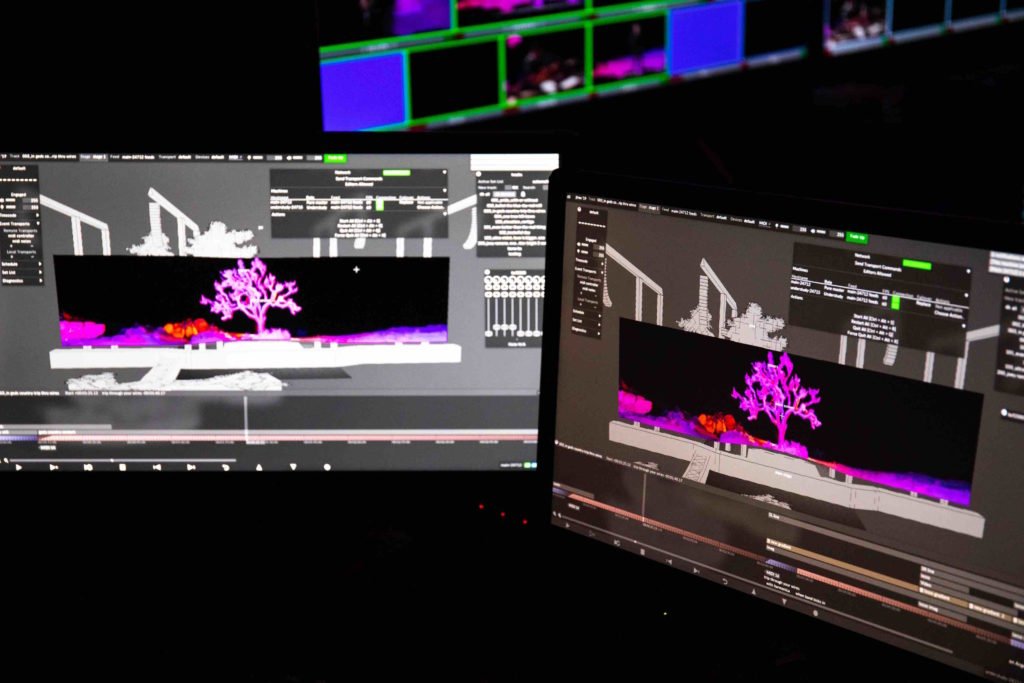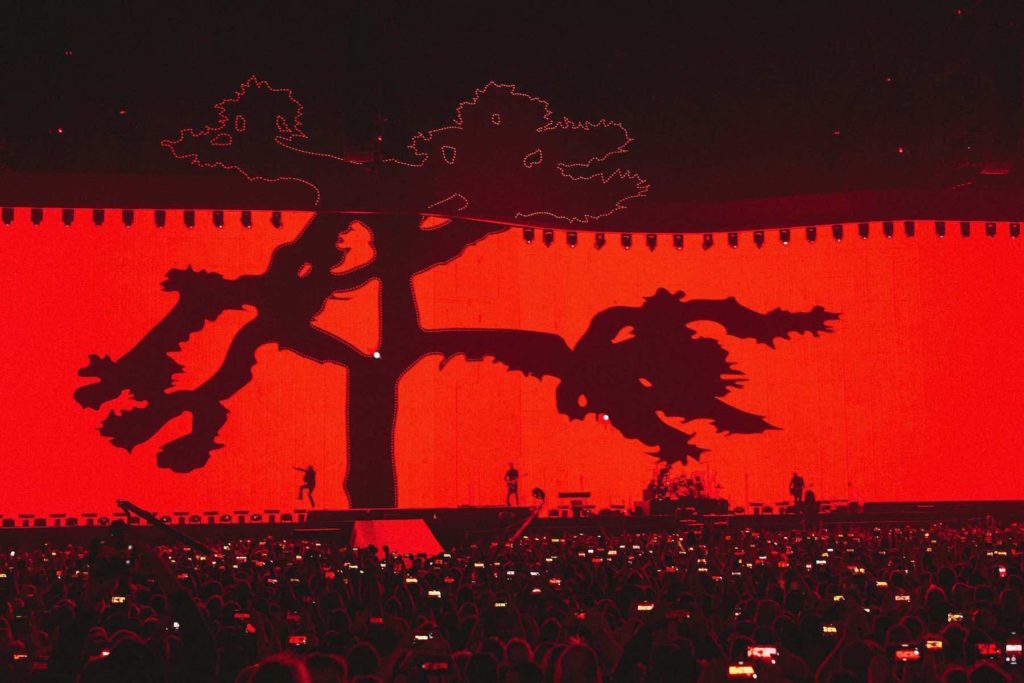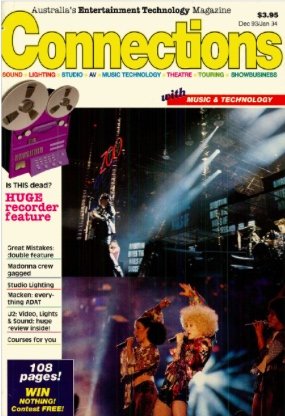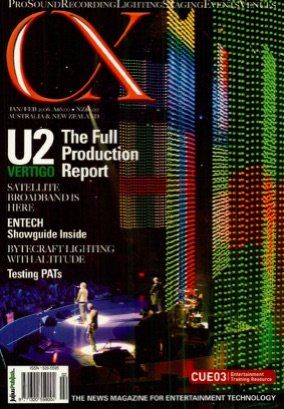News
10 Feb 2020
U2
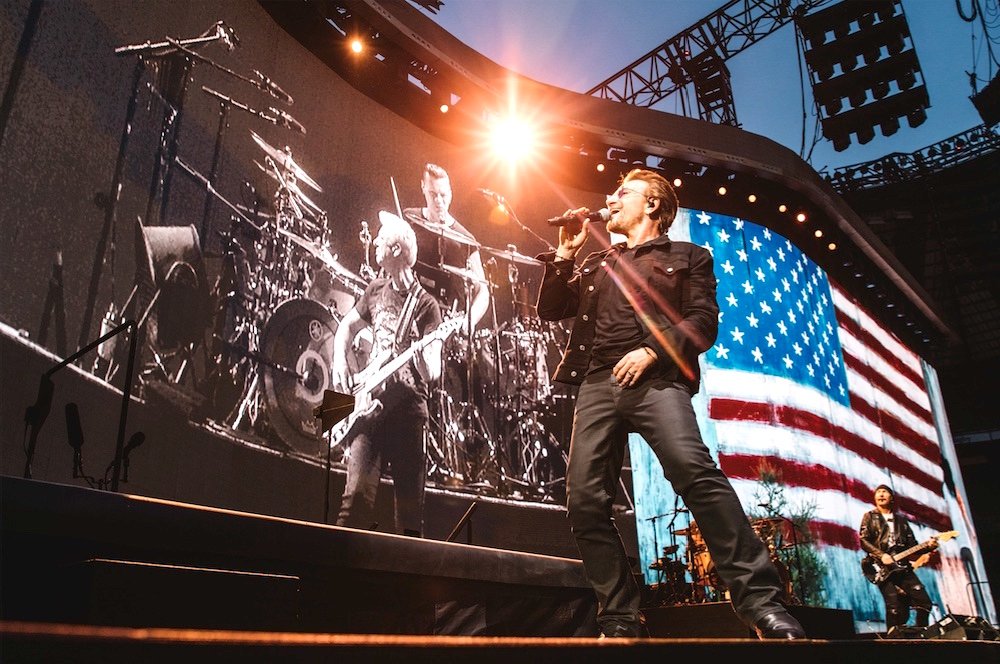
Subscribe to CX E-News
U2
It was 1992 when I first reported on a U2 production; the ZOO TV Tour in Georgia, Atlanta. It was a notoriously forward-thinking stage design that featured the infamous Trabant cars with their innards gutted and retrofitted with lighting equipment.
Fast forward 28 years and U2 are still pushing production boundaries with their The Joshua Tree tour, a tour that began in 2017 and has played to over 2.5 million fans. After a bit of a hiatus, when they slipped in a totally different tour, the tour was resurrected for Australia and New Zealand.
Originally the tour was supposed to come to Australia in 2017 as part of The Joshua Tree’s 30th anniversary, but the band simply ran out of year! CX traveled to Brisbane’s Suncorp Stadium to interview Joe O’Herlihy and Willie Williams who have been a constant with the band since their early days.
Willie Williams
Creative Director & Lighting Designer
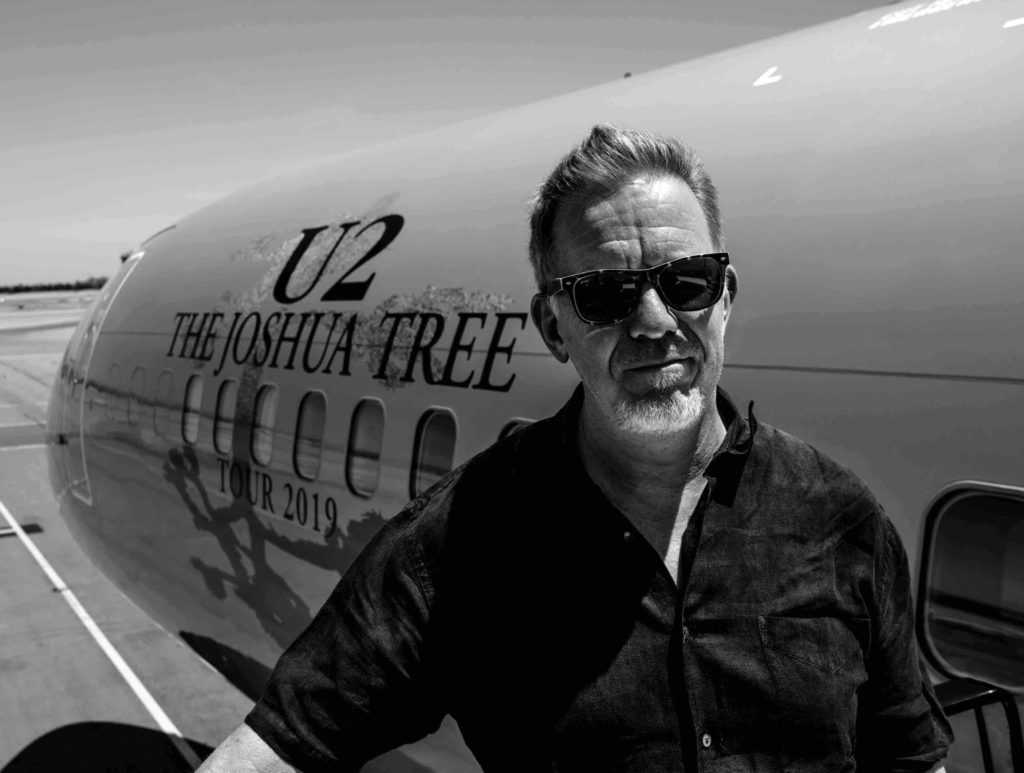
“This tour has always been on the books, we were always going to come,” revealed Willie. “I’ve really enjoyed dusting off this show and having another look at it. It’s also nice to be back outside with a large scale production, as last year’s Innocence + Experience tour was all indoor arenas.”
Willie commented that he had no difficulty in remembering the original Joshua Tree production, the problem was trying to forget the Innocence + Experience show.
“Last year’s show had different arrangements and different cues for some of the same songs and forgetting that was the tricky bit,” he said.
The first show kicked off in Auckland after a brief period of prep and rehearsal time, as even though it was an existing show there was still a lot to be done.
“We had a couple of weeks at Tait and then Mark ‘Sparky’ Risk, Alex Murphy and I spent a week in Melbourne doing pre-vis,” explained Willie. “I just wanted to relearn the cues and I wanted to do it in Australia to help us get over the jetlag.”
The show is divided into three parts; the first act is short with the band playing new songs out on a B Stage with no video or special effects.
“It’s really great to just see these four guys in the middle of a stadium, it’s like an 80s festival for me,” said Willie. “To remember what it’s like to just let the music do all the work and of course, the sound is enormous.
“Then we go into Act 2, which is The Joshua Tree, and the large screen comes to life with pretty much all the content by Anton Corbijn. There’s not a lot of IMAG so it’s extremely cinematic.
“It’s about the visual rather than seeing the band. The third act is ‘other stuff’ and we’ve changed that a bit as some of the songs weren’t even written before the last Joshua Tree tour. It also includes some of the classic songs that the audience would riot if we didn’t play.”
The gear is the same as the 2017 tour although there is a slight difference with the screen which originally had the Joshua Tree image painted onto it. This involved removing thousands of shaders and spraying them silver which cost at least US$500,000 to achieve.
A 50 stadium tour would allow that to fit into the budget but this tour is only 15 shows.
“We decided to mimic that look with video and it’s actually incredibly successful,” added Willie. “We tested doing it virtually in 2017 and it looked great to the naked eye but if you videoed it, you got moire patterns.”
Willie admits he can be his own worst enemy and that every set he designs barely has anywhere to put any lighting. On this tour, the rig is enormous yet very simple with little variety of fixtures as the bulk of the visuals are from the screen.
In a shocking move, the lights are only used to light the band and the scenery.
The rig is a mixture of new and old technology; 218 PRG BadBoy HPs, 48 Chroma-Q Color Force 48, four Color Force 12, 56 Martin Atomic Strobes with scrollers, six Hungaro flash units, 130 DWE Molefay 4×1, 20 DWE Molefay 2×1 and 12 Look Solutions Unique 2.1 hazers.
Control was three MA Lighting grandMA2 full-size consoles and one grandMA light. All of the followspots are PRG GroundControl Followspot System.
“Aside from the movers, there’s my usual selection of analog antiques; Atomic strobes with scrollers, sodium fixtures, Hungaroflash units, 100W bulkheads and, I’m pleased to say, lots of DWEs,” commented Willie.
With such a high definition screen, 4K cameras and a massive resulting image, care had to be taken to ensure the band looked good on IMAG because just like Willie, Joe and I, they ain’t getting any younger!
“Protecting the band in that respect is a big part of the job as is making pictures that have a real cinematic quality that can stand up to the glory of Anton’s films,” said Willie.
When the band needs to be highlighted by lighting, as opposed to by the music and visuals, Willie uses long-throw BadBoy Spots which he describes as absolutely extraordinary for the size of the fixture.
“The amount of light that comes out of them is preposterous,” he stated. “And of course, we have much more control over them than you would with a regular long-throw follow spot.
“Alex Murphy calls those and he is at FOH with Matt Askem, the video director, so Alex can see all of the monitors. They are constantly monitoring it with Jim Toten who is doing the engineering.
“Again, it’s a very cinematic approach and as I said, it’s about protecting the band and producing great quality pictures.”
As to lighting songs which he has lit for 32 years, Willie remarks that it can be tough and that sometimes he doesn’t try to do something different. For instance, the song Vertigo which was first performed in 2005 has pretty much remained the same lighting and video.
“There are two reasons for that, one is because it works and it’s not going to get any better, but the video piece was made by Run Wrake, our favourite animator, and he passed away several years ago so in a way we’re bringing a piece of him with us which is rather nice,” explained Willie.
“Also, when working with a band for this length of time, traditions set in such as the beginning of Where The Streets Have No Name has the red cyc and that’s become the law now. So that’s what we do but each time I find a way of re-interpreting that look.”
Occasionally Willie and the creative team will nail a song so well, the band may never play it live again because it just is not going to compete with what has already been done.
Obviously, Willie also reinvents the visuals for some songs such as Ultra Violet from Achtung Baby which has had several lives. On the 360° Tour, the one where Bono had the hanging microphone and laser suit, Willie thought there was no way he could do it better.
“On this tour, that song is in Act 3 and is used to pay tribute to great women of history,” Willie said.
“Being U2, much of it is bespoke, so the people who are honoured are different wherever we go, so that’s a huge amount of work. However, it’s really given that song a whole new life and when it works, you go with it.
“Then there are some songs like One where you just have to step out of the way – there have been some pretty high profile visuals made for that song
that have ended up in the bin.
“You get to the point where the audience owns those songs and if you try to show them something clever or arty, it’s just annoying for them. On this tour, we turn all the lights off so they perform by the light of thousands of mobile phones.”
Willie’s lighting designs are never fussy and pretty much cut to the chase. However, when it is over the top, it’s really over the top.
He explained that when he has a very high tech show or a big video show, he balances that with humanity. Otherwise, it’s like watching television. Hence he always has low-fi gear on his shows, in this case, heaps of DWEs.
“I love how dirty the colour temperature is with the DWEs, they can really convey a threat and they’re very unreliable,” he added. “It’s all about colour temperature. The fact that tungsten is being made illegal is absurd.
“Tungsten is really great for lighting human beings and most performers are that. I’ve actually figured out how many tungsten lightbulbs I’ll need for the rest of my life and bought that many.”
“I’m finding the transition to LED a little dull although every year it gets a bit better so hopefully we’ll get there. We have the original Atomic Strobes on this tour as none of the LED models deliver what they can, and I’ve tried them all. They have a wonderful feel to them.
“My crew chief calls the Hungaro Flash units the Horror Strobes as they are awful but they have something about them you can’t replicate with LED technology. Of course, we also have a mirrorball because you have to have one to know you’re at a show!”
Willie remarked that in as much as a show like this can have a director, that’s pretty much what he does once it is up and running.
U2 always wants to make each show as bespoke as possible for each city and each country, so there’s new video every day, new chat, and certain things that Bono will sing relating to where they are.
“They really do want to make a connection with where they are and let the audience know this isn’t just city #45,” added Willie.
“That’s more of my day than the load-in but when you’ve got Jake Berry as Production Manager, you don’t have to worry about load-in.”
Joe O’Herlihy
Sound Engineer
After the first two shows in Auckland where Joe had to deal with 43 kilometre an hour winds gusting from the stage, Brisbane’s still and balmy 34°C was a blessed relief.
“I was looking all night long for my wind knob to dial it down but I couldn’t find it,” said Joe tongue in cheek. “It would be a sound engineer’s dream if someone could invent one!”
The sound system hasn’t changed dramatically since 2017 although there has been plenty of software updates that obviously improve the efficiency of all the technology.
“We now have the DiGiCo SD7 Quantum consoles and I believe we have the biggest selection of DiGiCo SD7s on any tour,” added Joe.
“We’ve got eight of them if you include the rehearsal room at the moment. With the software update to use the Quantum engines, they sound very transparent and very much more efficient with this upgrade than on previous occasions.
“It’s nice to have gear that is improving all the time like the SD7.”
Although the onboard selection has been improved enormously on the SD7, Joe still uses units that he has relied on for the past forty years with the band.
For guitars, he has eight Summit Audio DCL-200 tube compressors for each of the eight different amplifiers that The Edge uses in a combination of what is affectionately known as The Edge Orchestra.
For Bono’s main vocal, Joe uses Manley Voxboxes; one for each of the three different vocal mics he uses. A couple of Sweet compressors are used on Edge’s vocal, who uses a headset mic for manoeuvrability.
“The treatments and effects are standard Lexicon 480L as the reverb of choice for all of the vocals and believe it or not, PCM70s dating back to prehistoric times,” said Joe.
“They’re classic drum verbs and are a really good selection, plus I’ve also got a couple of harmonisers. They’re all uniquely part of their songs now and I have tried out all of the various plugins, but the older, vintage products have such a unique sound. However, you have to cross your fingers that they’ll work every time the back of the truck opens!”
The band has been a Clair Global client for 36 years so it was no surprise to see a Cohesion CO-12 system consisting of four sets of line arrays suspended from cantilever cranes and trimmed at 30 metres, carefully positioned so as not to obstruct the giant screen.
The curvature of the system is designed and configured to get right up into the stands and areas that physically are very difficult to reach.
Behind the mix position, which is 36m away from the stage, are four delay positions placed in an arc shape to ensure sound reaches the back of the stadium.
Joe remarked that he has been extremely impressed with the sonic value of the Cohesion system and added that the CO-12 is a sensational box that delivers very high performance and good consistency.
“The box is designed to create exactly the frequencies that you want to dominate in that long-distance trajectory,” he continued. “Therefore the intelligibility of Bono’s vocals is so much better.
“I purposely read the reviews to see if anyone writes what Bono is saying in the spoken word because if they do, to me that’s a result.”
Around the front of the stage are CO-8 front fills that follow the curvature of the stage whilst the sub energy in the system is delivered by CP-218s in a cardioid setup.
There are 16 CP-218 per side with every other box facing backward to create a ‘cardioid movement’ which basically means that all of the energy is propelled into the stadium instead of coming back under the stage to create difficulties on stage for the band.
Microphones are a true and tested formula that has become a well-oiled machine. The vocal mics are largely Shure SM58s, with The Edge on a Shure 54 headset. The guitars are all 58s and 57s as well.
“The snare is a little bit different in that I have three mics on it; top, bottom, and rim snare as Larry does a lot of rolling snare patterns for a couple of songs,” revealed Joe.
“The kick has an SM91 and SM52, and there’s an SM57 on the snare bottom. AKG 451s and Sennheiser 421 are on the toms. Percussion and tambourines SM57, AKG 4050 on the overheads and an SM81 on the high hat.”
“Because we have two drumkits, the microphones are mirror-imaged and the same on the B-stage. Edge has a guitar change for every one of the 24 songs which keep the guitar tech quite busy whilst Adam has a measly 16!”
In monitor world, Bono has his own SD7 operated by Alastair McMillan, and The Edge also has his own run by Richard Rainey. CJ Eiriksson looks after Adam Clayton and Larry Mullen Jr. on yet another SD7.
“It’s great to be working with JPJ in Australia. They’re an incredible company that has stood the test of time,” said Joe.
“On the other side of the world, they’re our go-to guys. They’re always keen to ensure everything is done correctly so you have a scale of the understanding of what’s required.
“It’s very important for an organisation such as this to know that all the basics are covered in the eventually of if anything goes wrong, we know there are people on it straight away. That’s very comforting.”
CX MAGAZINE – FEBRUARY 2020
LIGHTING | AUDIO | VIDEO | STAGING | INTEGRATION

ENTERTAINMENT TECHNOLOGY NEWS AND ISSUES FOR AUSTRALIA AND NEW ZEALAND
– IN PRINT AND FREE ONLINE WWW.JULIUSMEDIA.COM
More U2?
U2’s Zoo TV Australian tour – Connections Dec-Jan 1994 [extract here] and their 2006 Vertigo tour – CX Magazine Jan-Feb 2006 – PDF extract.
© VCS CREATIVE PUBLISHING
Subscribe
Published monthly since 1991, our famous AV industry magazine is free for download or pay for print. Subscribers also receive CX News, our free weekly email with the latest industry news and jobs.

